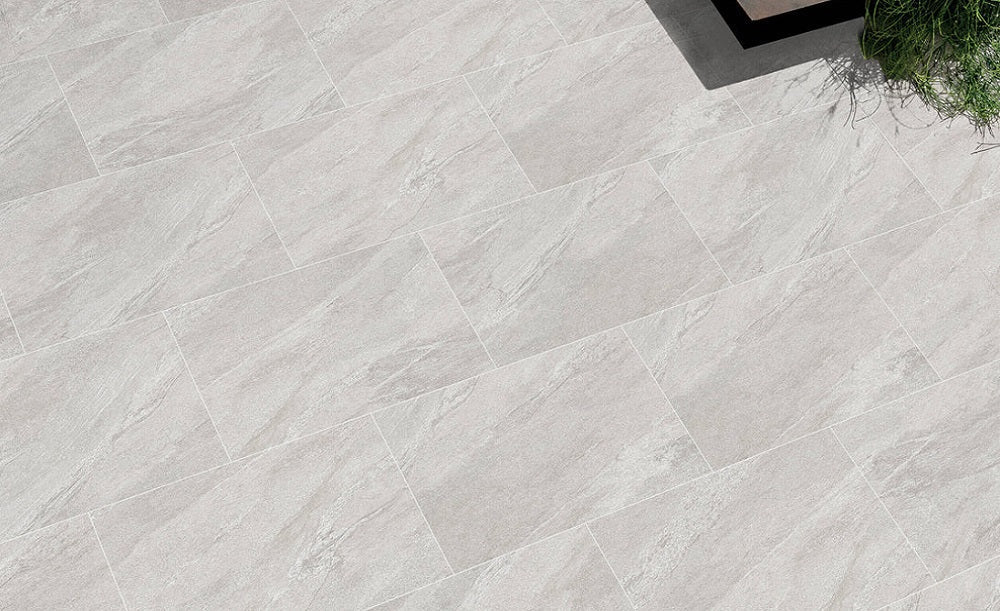
Important Tips on How to Lay Paving Slabs in Your Garden in 2025
Share
The ground beneath your feet is the first step in transforming your outdoor area. For a polished, long-lasting finish, knowing how to lay paving slabs correctly is crucial, whether you're remodeling your backyard or creating a brand-new garden patio. Slab pavers, patio slabs, flagstone, and Indian sandstone are just a few of the countless options available in 2025, but the process still requires attention to detail, careful planning, and precision.
In this guide, we'll give you professional advice on how to lay slabs for patio areas in gardens and explain why surface preparation and stone footing are so important to the finished result.
1. Choose the Right Slabs for Your Patio
Choosing the appropriate material is crucial before beginning the installation. Your patio's durability, upkeep, and appearance can all be impacted by the paving slabs you choose.
In 2025, the following choices will be popular:
- Slab pavers are perfect for modern and contemporary garden designs and are available in a variety of textures and colors.
- Flagstone: Well-known for its organic and rustic appeal, this material is ideal for homeowners seeking a classic, natural style.
- Indian Sandstone: This has remained a popular option for slabs for garden patio designs that feel both sophisticated and earthy because of its warm tones and distinctive textures.
When making your decision, take into account the climate, the space's intended use (such as decorative or high foot traffic), and the overall aesthetics of your garden.
2. Plan and Measure Your Patio Area
A carefully planned layout guarantees fewer errors and less waste of materials. Mark the planned patio area on your garden sketch first. Take precise measurements and account for any desired borders or curves.
Before installation, lay out your selected patio slabs dry on the ground to see how they will look.
3. Focus on a Solid Stone Footing
Making sure the stone footing is stable is one of the most important parts of installing slabs and paving. Your patio's strength and longevity are determined by this layer, which serves as its foundation.
A typical base layer structure is as follows:
- Sub-base: Usually composed of hardcore or compacted MOT Type 1. It offers structural assistance.
- Bedding layer: The slabs are cushioned and adhered to by a mixture of cement and sharp sand.
Don't neglect this step because without a proper stone footing, your patio may eventually shift, crack, or sink!
4. Ensure Proper Drainage and Gradient
Even the most exquisite patio can be ruined by water pooling. Make sure your patio is always slightly sloping away from your house, usually at a gradient of 1:60. This preserves the foundation and aids in the natural drainage of rainwater.
Drainage is important regardless of the material, but porous materials like Indian sandstone may absorb some moisture.
5. Use the Right Laying Technique
Different laying techniques may be required depending on the material you have chosen:
For the majority of patio paving slabs, particularly heavy stones like flagstone and Indian sandstone, the full bed method is advised.
Placing mortar spots on corners, or "spot bedding," is not advised as it may eventually cause instability and cracking.
When the bedding is ready, place the slab on top and use a rubber mallet to gently tap it into place. To make sure every slab is level and flat, use a spirit level and spacers to create even gaps.
6. Cut and Shape Slabs Where Needed
Some patio slabs may need to be cut into specific shapes to accommodate curved garden edges or obstructions like trees. Wear protective gear and exercise caution when using an angle grinder or diamond blade cutter.
Pro Tip: To minimize dust and stop chipping, lightly moisten the slab before cutting.
7. Allow the Mortar to Set
After laying the slabs, avoid stepping on the surface for at least 24–48 hours. This gives the mortar underneath time to harden and ensure your paving slabs don’t shift or become uneven.
It's time to join the slabs after the mortar has solidified. You can make use of: Indian sandstone frequently benefits from weatherproof jointing solutions to guard against rain damage, so always match the jointing technique with the slab type. Although it's not required, sealing your patio slabs can help prevent moss, algae, stains, and UV damage, particularly in damp or shaded areas. In 2025, breathable, environmentally friendly sealants that offer protection without compromising the textures of natural stone are becoming more and more popular. After the slabs are clean and completely dry, apply sealant. Depending on usage and weather, reapply every two to three years. The first step is laying your garden patio slabs. Their lifespan and appearance are improved by regular cleaning and upkeep. Tips for routine maintenance: Paving slab installation for patio areas is an opportunity to improve the outdoor living space in your house, not just a job. You can have a patio that is both beautiful and long-lasting by selecting the appropriate materials, such as flagstone or Indian sandstone, laying a sturdy stone footing, and following the right installation procedures. These pointers will guarantee that your 2025 garden patio project is built on a strong foundation, both aesthetically and practically, whether you're hiring professionals or organizing a do-it-yourself weekend. Are you prepared to begin transforming your garden? Allow our paving professionals to assist you at every stage.
8. Fill the Joints Properly
9. Seal and Protect Your Paving
10. Maintain Your Garden Patio Regularly
Conclusion
